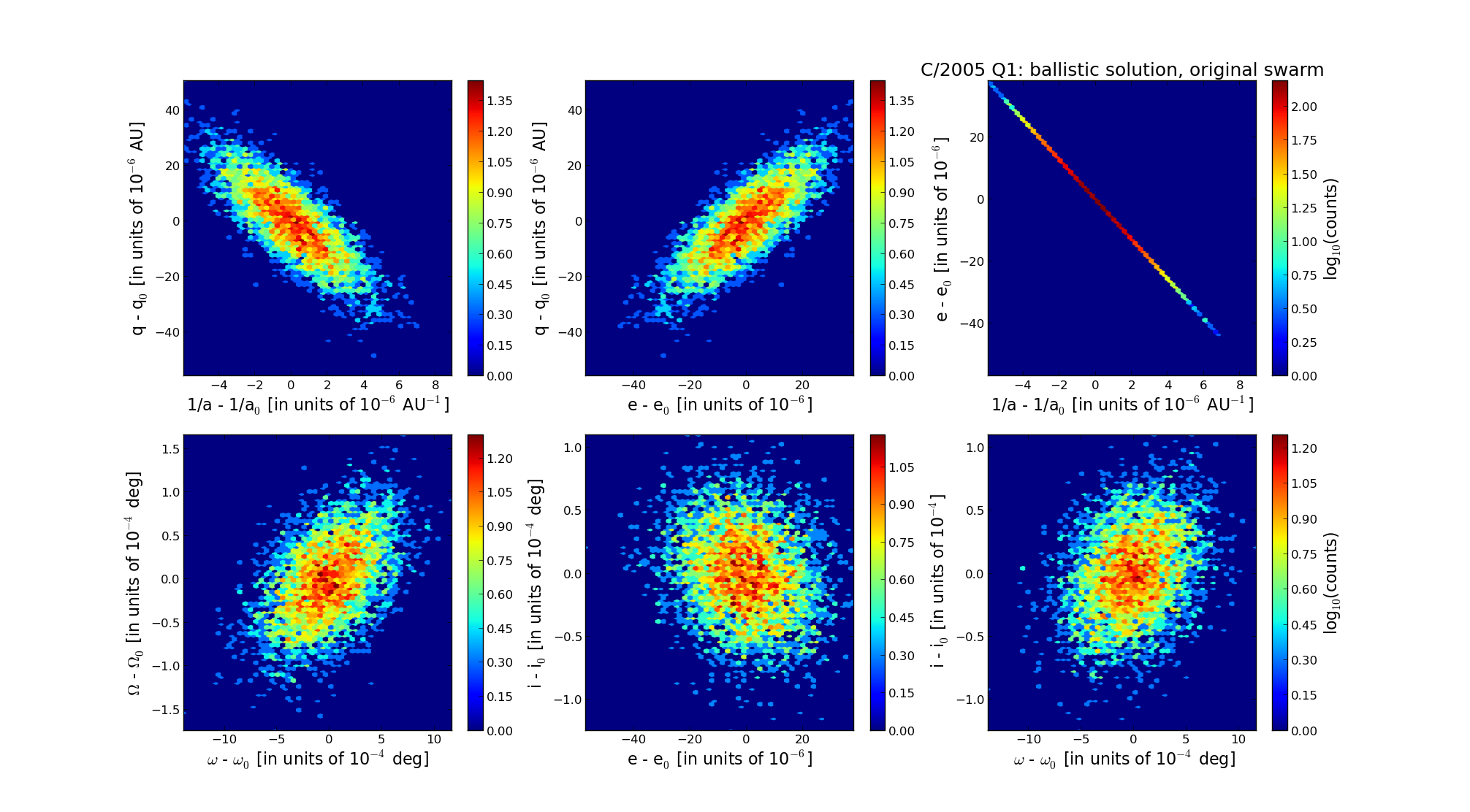| Solar System Dynamics & Planetology Group |
 |
C/2005 Q1 LINEAR |  |
| Solar System Dynamics & Planetology Group |
 |
C/2005 Q1 LINEAR |  |
| number of observations | 161 |
| number of residuals | 309 |
| data interval | 2005 Aug. 27 — 2007 Oct. 16 |
| rms [arcsec] | 0.48 |
| orbit quality class | 1a |
| Epoch (TT) | 20050818.0 | = JD 2453600.5 |
| time of perihelion passage (TT) | 20050825.529483 | ± 0.003554 |
| perihelion distance | 6.40841016 | ± 0.00001266 |
| eccentricity | 1.00447731 | ± 0.00001322 |
| argument of perihelion [deg] | 44.691595 | ± 0.000311 |
| longitude of the ascending node [deg] | 87.727459 | ± 0.000045 |
| inclination [deg] | 105.188309 | ± 0.000033 |
| inverse semimajor axis [10-6 au-1] | -698.66 | ± 2.06 |

| Epoch (TT) | 16971120 | |
| time of perihelion passage (TT) | 20050826.530305 | ± 0.003639 |
| perihelion distance | 6.39876801 | ± 0.00001266 |
| eccentricity | 0.99985473 | ± 0.00001307 |
| argument of perihelion [deg] | 44.829145 | ± 0.000317 |
| longitude of the ascending node [deg] | 87.678330 | ± 0.000045 |
| inclination [deg] | 105.254459 | ± 0.000033 |
| inverse semimajor axis [10-6 au-1] | 22.70 | ± 2.04 |
| Epoch (TT) | 23120411 | |
| time of perihelion passage (TT) | 20050824.863594 | ± 0.003613 |
| perihelion distance | 6.40857612 | ± 0.00001269 |
| eccentricity | 1.00049664 | ± 0.00001311 |
| argument of perihelion [deg] | 44.604432 | ± 0.000316 |
| longitude of the ascending node [deg] | 87.698097 | ± 0.000045 |
| inclination [deg] | 105.212368 | ± 0.000033 |
| inverse semimajor axis [10-6 au-1] | -77.50 | ± 2.05 |